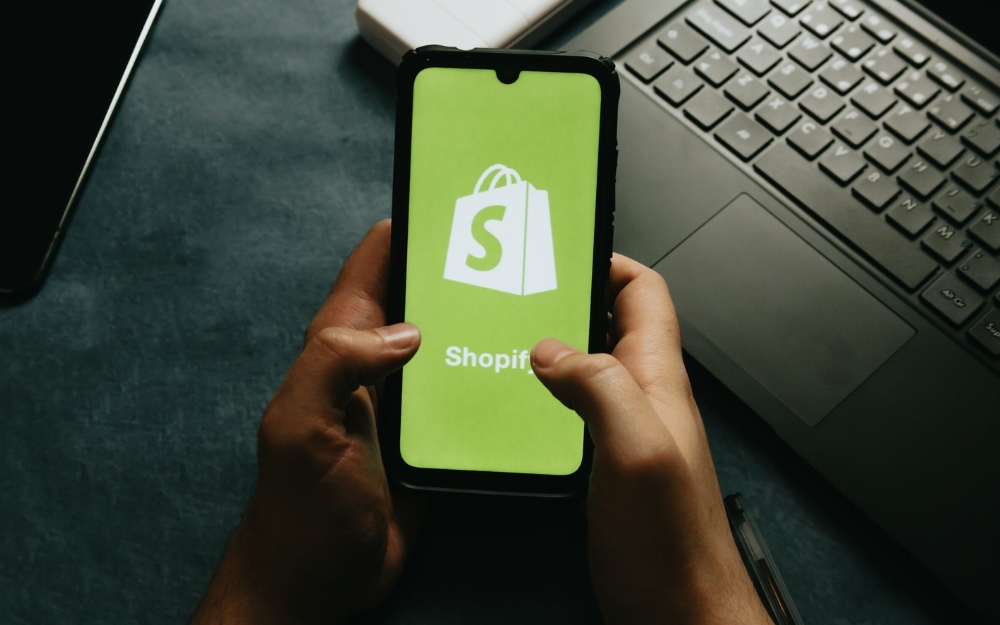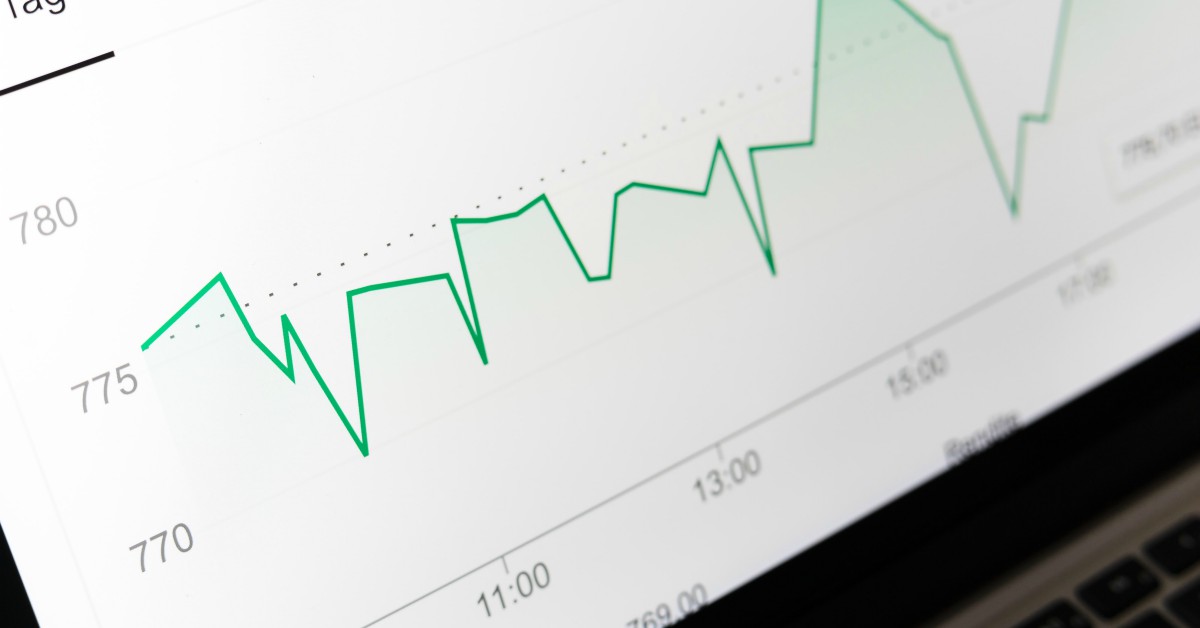In the ever-evolving world of e-commerce, staying ahead of the curve is essential for success. Shopify, a pioneer in the e-commerce platform realm, updated to Online Store 2.0. back in July 2021. However, a lot of sites are still using the Vintage (Shopify 1.0) version themes. The Online Store 2.0 update brings a plethora of new features and enhancements that make running and online store much simpler.
What is Shopify 2.0?
Shopify 2.0, or more accurately Shopify Online Store 2.0, represents an advancement in the Shopify platform that isn’t bound to a specific pricing tier or plan. It introduces a fresh theme architecture and offers increased customisation options and integration capabilities.
The features of Shopify Online Store 2.0 rely on JSON templates, a template format that complements Shopify’s existing Liquid template language (which is open source). In technical terms, JSON, or JavaScript Object Notation, is a text-based data exchange format that efficiently stores JavaScript elements, ensuring swift processing. These new templates fundamentally alter the way web pages are designed, rendering them more dynamic and adaptable. The upgrade offers store owners capabilities to manage their own shop using dynamic sections instead of relying on custom websites that are built with HTML or other languages. The dynamic section offers a drag-and-drop feature that can be used with or without technical knowledge.
While upgrading to Shopify 2.0 isn’t mandatory, it’s not essential at all but for new builds or stores looking to grow and take advantage of the latest features and functionality, it’s worth considering Shopify 2.0

Shopify 2.0 vs Shopify 1.0
As with any major software version upgrade, this latest release delivers enhancements in user experience, performance, and functionality. In the upcoming sections, we will delve into several features found in Shopify 2.0 and highlight the factors that make it a substantial leap forward for eCommerce businesses.
An Enhanced User Interface to Captivate Website Visitors
Starting an online store and tailoring Shopify’s default theme is straightforward for any online stores. In Shopify 1.0, the default theme is called Debut, while the new theme for Shopify 2.0 is named Dawn.
Dawn is designed to leverage all the cutting-edge capabilities of Online Store 2.0 and offers versatility for stores of various scales. This fresh theme places a strong emphasis on visual appeal and incorporates top-notch UI and eCommerce trends, such as responsive and mobile-friendly design, announcement bars, media-optimised product pages, and a trendy and minimalist user interface.
Faster Loading Times
Is Shopify 2.0 quicker? In general, here are a few of the changes that influence the speed of Shopify 2.0:
- Shopify’s default theme (Dawn) boasts a 35% increase in speed.
- Enhanced loading speed due to the introduction of new sections and JSON templates.
- Greater utilisation of App Extensions, which operate on Shopify’s servers using Liquid (as opposed to JavaScript, which runs on the user’s device).
- An expedited checkout process for eCommerce stores.
Enhanced Customisation
One of the standout features of Shopify 2.0 is its extended customisation capabilities. Unlike Shopify 1.0, where customisation was mostly limited to the homepage, unless you are an experienced developer, Shopify 2.0 allows you to customise every page. This newfound flexibility is a game-changer for businesses looking to create a unique online presence.
JSON Templates
Shopify 2.0 introduces JSON templates, which work alongside the existing Liquid templates. JSON (JavaScript Object Notation) templates facilitate the creation of dynamic and highly customisable pages. This innovation enables up to 25 sections with each page, each containing up to 50 blocks of reusable content. This means you can design your website to look exactly how you want it to and reuse sections on other pages without the need for a page builder.
Boost Store Versatility Using Metafields and Metaobjects
In Shopify 2.0, an addition known as a metafield (or custom field) allows apps to incorporate and retain data related to a Shopify resource. Metafields can be used for copy, articles, blogs, collections, customers, pages, products, images, and more. This means flexibility of the system to allow metafields to be linked or associated with various types of entities or owners, depending on the specific use case and configuration.
Why are metafields important? They enable merchants to associate information with a resource, even when an input field might not be readily accessible. Furthermore, they offer a more aesthetically pleasing user interface (UI) presentation, with the metafield format being determined by the theme. As an illustration, this allows for the connection of details like part numbers, size charts, release dates, ingredients, or downloads to various owner types.
Shopify 2.0 also added Metaobjects. Metaobjects enable you to incorporate and retain additional organised data within your shop. They serve various purposes within your Shopify admin, from serving as data storage to crafting reusable, structured content that can be showcased on your online store. Here are a few instances of how you can employ metaobjects and where they can be utilised:
- Develop profiles for brand ambassadors or influencers, complete with images and text, and subsequently exhibit them on a dedicated page within your online store.
- You have the flexibility to add metaobjects to various components of your shop, including products, collections, customers, orders, and more, all directly accessible through your Shopify admin.
- Construct FAQs (Frequently Asked Questions) related to your products and feature them on the respective product pages of your online store.
- Augment your product listings and presenting them on your product pages on your online store.
For those using the Online Store 2.0 theme, you can seamlessly integrate your metaobjects with your theme by establishing a metaobject reference utilising metafields.
Unlike in Shopify 1.0, where this required code-level descriptions, Shopify 2.0 introduces a method to include these directly via the theme editor, offering the additional convenience of importing data as an alternative to manual entry.
Elevate Flexibility with App Blocks
An app block encompasses any interactive component that can be integrated into a website, such as a 3D product model, product reviews, pricing information, ratings, or any other tailor-made element. This block is designed to link to a dynamic source, guaranteeing that the content remains synchronised with its origin. The advantage lies in the flexibility to insert, delete, or rearrange the app block at any location within the website’s section or theme.
Checkout Optimisation
Shopify 2.0 streamlines the checkout process, ensuring that the final steps of the customer journey are as efficient as possible. The upgrade can now manage seven times the capacity and can also be customised with extensions to facilitate the integration of new features into areas that were previously inaccessible. Customisation of checkout pages does require Shopify Plus but the streamlined process in Shopify 2.0 benefits all store owners and users.
Benefits of Switching to Shopify 2.0
Streamlined User Experience: Shopify 2.0 places a strong emphasis on user experience, making it even easier for store owners to set up and manage their online stores. The revamped interface is more intuitive, with a user-friendly dashboard that simplifies tasks like adding products, managing inventory, and tracking sales.
Enhanced Customisation: One of the most exciting aspects of Shopify 2.0 is its enhanced customisation capabilities. With an array of new themes and an improved theme editor, businesses can create a unique and visually appealing online storefront that aligns with their brand identity. This level of customisation goes beyond aesthetics, allowing businesses to optimise their websites for better conversion rates and user engagement.
Advanced Selling Tools: Shopify 2.0 introduces an array of advanced selling tools that empower businesses to sell more effectively. From AI-powered product recommendations that enhance upselling and cross-selling opportunities to an improved checkout process that reduces cart abandonment, these tools are designed to boost sales and enhance the customer journey.
Multi-Channel Integration: Expanding beyond the traditional online store, Shopify 2.0 integrates seamlessly with various sales channels, including social media platforms and online marketplaces. This means that businesses can manage their inventory, orders, and sales across multiple platforms from a centralised dashboard, streamlining operations and maximising reach.
Performance Optimisation: In the world of e-commerce, speed matters. Shopify 2.0 comes equipped with performance optimisation tools that ensure lightning-fast loading times and a smooth browsing experience. This not only keeps customers engaged but also plays a crucial role in search engine ranking, ultimately driving more organic traffic to the online store.
Data-Driven Insights: Data is the backbone of informed decision-making. Shopify 2.0 introduces robust analytics and reporting features that provide businesses with in-depth insights into their store’s performance. From tracking sales trends to monitoring customer behaviour, these insights enable businesses to fine-tune their strategies and drive continuous growth.
Enhanced Mobile Experience: With a growing number of consumers shopping on mobile devices, an optimised mobile experience is non-negotiable. Shopify 2.0 prioritises mobile responsiveness, ensuring that online stores look and function flawlessly on smartphones and tablets, further expanding the potential customer base.

Shopify 2.0 isn’t just an update; it’s a glimpse into the future of e-commerce. With its focus on user experience, customisation, advanced selling tools, multi-channel integration, performance optimisation, data-driven insights, and mobile experience, it equips businesses with the tools they need to thrive in an increasingly competitive online landscape.
Whether you’re a small startup or an established enterprise, embracing Shopify 2.0 could be the game-changing decision that propels your e-commerce endeavours to new heights. So, why wait? Embrace the future of e-commerce with Shopify 2.0 today and watch your online business soar.
Ways to Migrate to Shopify 2.0
Shopify migration can be done in three ways and if you’re not sure or not technical, you should hire a professional expert or an agency like Amica Digital instead.
Path 1: Download a new Shopify 2.0 Theme
This path is the easiest part as all you have to do is download a theme and use it as you go. Then, custom design it like you would creating a new Shopify store but will require a technical knowledge or a Shopify developer to implement it.
Pros:
- Quick and Easy: this path is often the quickest way to update your theme to the latest version.
- Built for Shopify 2.0: Themes designed for Shopify 2.0 are optimised to take advantage of its features and capabilities.
- Regular Updates: Premium 2.0 Themes are usually well-maintained and receive regular updates from the theme developers.
Cons:
- Cost: Premium Shopify 2.0 themes can be costly. Free themes are available, but they may have limited customisation options.
- Limited Customisation: pre-built themes might not fully align with your brand’s unique requirements, limiting customisation possibilities.
Things to consider 💡!
- Ensure the new theme is compatible with your existing apps and integrations.
- Backup your current theme and data before making a switch
- The layout of your site will be impacted when you change theme and you will need to make changes to get it looking as it did before.
Path 2: Download a new version of a Theme
In most cases, many of the themes available have the capability to be upgraded to a new version. Thus, allowing you to have the same look and feel of a website but with Shopify 2.0 features along with it. You can also add this manually to your Shopify dashboard / access.
Pros:
- Cost-Efficient: if you have a paid theme, downloading a new version may be free or available at a lower cost.
- Familiarity: you are already familiar with the theme’s structure and features.
Cons:
- Compatibility Issue: upgrading to a new version may introduce compatibility issues with your existing version store setup.
- Outdated Features: You might miss out on new features and optimisations available in 2.0 themes.
Things to Consider 💡!
- Thoroughly read the release notes and documentation for the new version.
- Test the updated theme in a development environment before applying it to your live store.
- Themes that have been updated for Shopify 2.0 will still require changes to be made on your store – it’s not a quick and simple update.
Path 3: Migrate your Theme manually
You can add online store 2.0 functionality to a theme by converting the same liquid template, which was the Shopify 1.0 format from your previous theme, into a JSON template (the 2.0 format).
It is highly recommended to seek help from a Developer. If you need help, you may book a call with us here.
Pros:
- Full Control: You have complete control over the migration process, allowing for customizations to meet your exact needs.
- Minimal Cost: If done in-house, this option can be cost-effective.
Cons:
- Complexity: Manual migration can be complex, especially if your theme is highly customised.
- Time-Consuming: It can be time-consuming, and you may experience downtime during the migration.
Things to Consider 💡!
- Document your theme customisations and settings before migration.
- Test the migrated theme thoroughly in a development environment.
- Consider working with experienced developers if your theme is heavily customised.
What could go wrong if you do it yourself when migrating your store from Shopify 1.0 to Shopify 2.0?
Caution 💡 !!!
When migrating your store, there are several things that could go wrong if you try to do it yourself:
- Data Loss: Incorrectly migrating data such as product listings, customer information, and order history could result in data loss, leading to a poor customer experience and lost sales.
- Broken Links: If you’re not careful during the migration process, you might end up with broken links, which can negatively impact your SEO and user experience.
- Theme Compatibility: Your existing theme may not be fully compatible with Shopify 2.0. You might need to make significant adjustments or even choose a new theme, which can be time-consuming.
- App Compatibility: Some apps and integrations you’re using in Shopify 1.0 might not work with Shopify 2.0. You’ll need to find alternatives or custom solutions, which can be challenging.
- Custom Code: If you’ve implemented custom code or scripts on your store, they might not work as expected in Version 2.0. You’ll need to review and adapt your code.
- SEO Impact: Mishandling the migration can hurt your store’s search engine rankings. You’ll need to ensure proper redirects and SEO best practices are in place.
- Downtime: Inadequate planning can lead to extended downtime for your store, resulting in potential revenue loss.
- User Experience: A poorly executed migration can lead to a bad user experience, which can drive customers away.
To minimise these risks, it’s recommended to work with experienced Shopify developers or agencies who specialise in migrations. We can ensure a smoother transition, minimise disruptions, and help you take full advantage of 2.0’s features.
In summary, the best path for updating your Shopify theme depends on your specific circumstances. If you want a quick and hassle-free update, Path 1 is suitable (note: this is only true if it’s a new build or you have no customisations). If you have a custom theme and want to maintain control, Path 3 might be the way to go. Path 2 can be a middle ground, but you should carefully review compatibility and test before applying the new version. Regardless of the path, always back up your store data and consider seeking professional help if the migration is complex.
Migration is not a walk in the park. This requires technical knowledge to successfully migrate it. If you don’t have the knowledge, better to engage an Agency or a Developer to do this for you.
Amica Digital can guide you through the process of migrating o Shopify 2.0. Book a call now!
Book a Discovery Call






No Comments